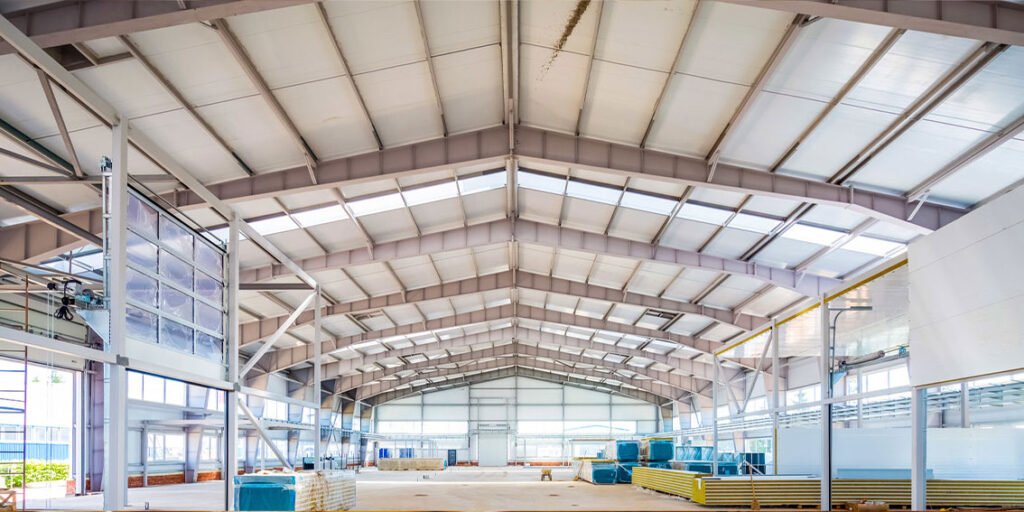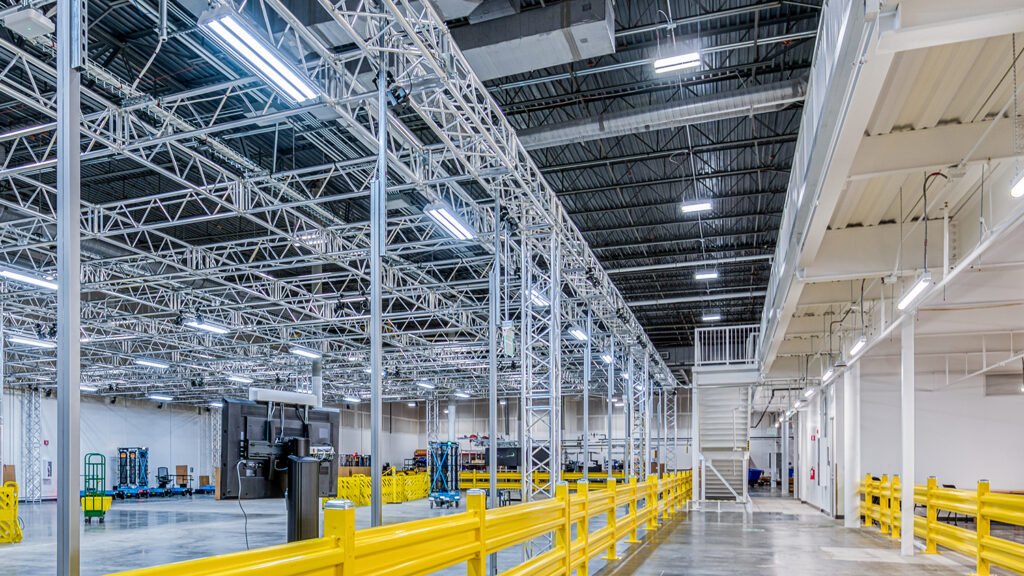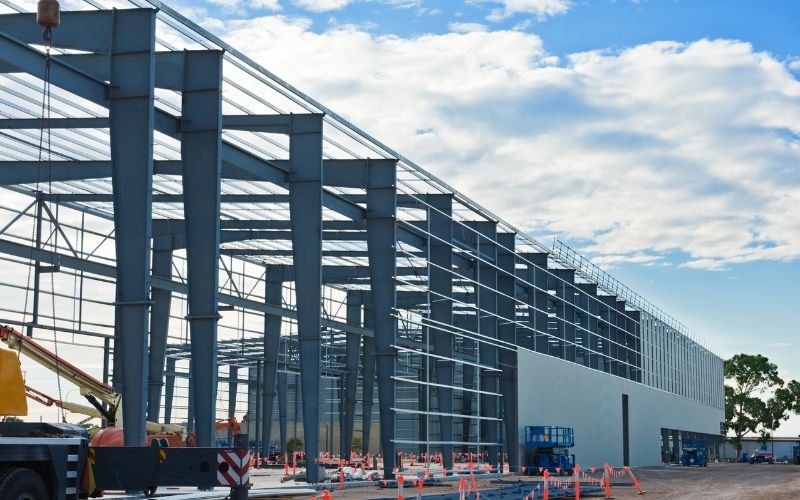E-state Nirman Nigam industrial Building Creator Of India

Introduction to Industrial Buildings:-
E-state Nirman Nigam Industrial buildings are essential components of the modern economy, providing spaces where raw materials are transformed into finished products. They are designed to accommodate machinery, equipment, and large volumes of materials, and often include storage areas, production lines, and offices.
a. Manufacturing Facilities: These buildings house equipment and machinery for producing goods. They can vary widely in size and complexity, from small workshops to large factories.
b. Warehouses: Used for storing goods before distribution, warehouses are typically large open spaces with high ceilings to accommodate pallet racking and shelving systems.
c. Distribution Centers: These are specialized warehouses designed for efficient sorting and distribution of goods. They often have advanced logistical systems to manage inventory and streamline the shipping process.
d. Flex Spaces: These buildings combine office space with manufacturing or warehouse areas, offering flexibility for businesses that require both types of spaces.
e. Research and Development (R&D) Facilities: Designed for innovation and development, these buildings include laboratories and testing areas for developing new products.

Design Considerations:-
a. Structural Integrity: Industrial buildings need to support heavy machinery and large volumes of materials. This requires robust structural design, including reinforced concrete or steel framing.
b. Layout and Space Utilization: Efficient layout is crucial for maximizing productivity. This includes optimizing the flow of materials and minimizing wasted space. Design often involves open floor plans to facilitate movement and flexibility.
c. Environmental Control: Maintaining the right environmental conditions (temperature, humidity, ventilation) is important for both worker comfort and product quality. This can involve specialized HVAC systems and insulation.
d. Safety and Compliance: Industrial buildings must meet various safety standards and regulations, including fire safety, electrical codes, and occupational health requirements. Safety features may include fire suppression systems, emergency exits, and proper signage.
e. Sustainability: Modern industrial buildings increasingly incorporate sustainable practices, such as energy-efficient systems, renewable energy sources, and green building materials to minimize environmental impact.

Construction Materials and Techniques:-
a. Concrete: Often used for foundations, floors, and walls due to its strength and durability.
b. Steel: Commonly used for structural framing because of its high strength-to-weight ratio. Steel allows for large open spaces without the need for many support columns.
c. Prefabricated Components: These can speed up construction and reduce costs by assembling parts of the building off-site before transportation and installation.
d. Insulation and Cladding: Effective insulation and exterior cladding are crucial for energy efficiency and protecting the building from environmental conditions.
Technological Integration:-
a. Automation: Many modern industrial buildings are equipped with automated systems for manufacturing and warehousing, including robotics and conveyor systems.
b. Smart Technologies: Building management systems (BMS) and Internet of Things (IoT) devices are used to monitor and control building operations, such as lighting, heating, and security.
c. Data Centers: Some industrial buildings include data centers for managing IT infrastructure and supporting digital operations.

Maintenance and Operations:-
a. Regular Maintenance: Ensuring the building and its systems are well-maintained is essential for operational efficiency and safety. This includes routine inspections and repairs.
b. Facility Management: Effective facility management practices help ensure that the building remains functional and that any issues are addressed promptly.
c. Upgrades and Renovations: As technology and operational needs evolve, industrial buildings may require updates to systems or structural modifications.
Economic and Social Impact:-
a. Economic Contribution: E-state Nirman Nigam Industrial buildings are vital to the economy as they support manufacturing and logistics sectors, creating jobs and contributing to economic growth.
b. Community Impact: The presence of industrial buildings can affect local communities by influencing property values, local infrastructure, and employment opportunities.
c. Environmental Impact: The construction and operation of industrial buildings can have significant environmental impacts, necessitating careful planning and mitigation strategies to reduce their carbon footprint.

Conclusion:-
E-state Nirman Nigam Industrial buildings are complex structures that play a crucial role in the production and logistics sectors. Their design, construction, and operation are influenced by a wide range of factors, including structural requirements, safety regulations, technological advancements, and environmental considerations. As industries evolve and new technologies emerge, industrial buildings will continue to adapt to meet the changing needs of the global economy


